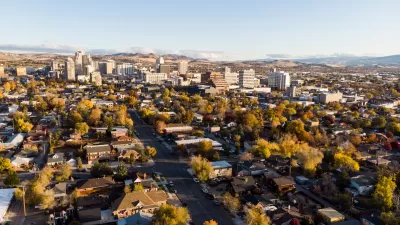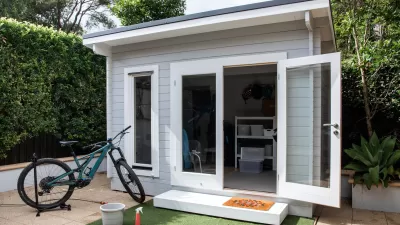Easing ADU regulations has led to some new construction in the Twin Cities, but the additional units have made a small dent in the area’s affordable housing problem.

Jessica Lee and Greta Kaul take a closer look at accessory dwelling units in the Twin Cities and find that the numbers are still low. "Since 2015 — the first year in which Minneapolis residents could apply for permits following a new ordinance by the City Council — construction peaked in 2017 with 38 new ADUs. In total, the city has permitted 137 ADUs. They are on about 0.2 percent of single-family lots." St. Paul allowed ADU construction starting in 2016, and four have been built there.
The challenges for interested homeowners in the Twin Cities are similar to ones found in other cities: high construction costs, confusing regulations and permitting processes, and difficulties obtaining loans. Both cities have taken steps to make the process easier. St. Paul, for example, now allows ADU construction throughout the city rather than just in a restricted area.
The role of ADUs in boosting available affordable housing in the Twin Cities remains to be seen, report Lee and Kaul:
In Portland there are ADUs on about 1.5 percent of single-family home lots, [Sarah] Berke said. In order to hit that benchmark Minneapolis would need about 1,200 ADUs, St. Paul would need 888, and the Twin Cities region would need about 11,000, according to a MinnPost analysis of MetCouncil data.
Still, local officials remain confident that ADU construction will pick up in the coming years with zoning reform and more calls for diversification of housing stock and increased density.
FULL STORY: Accessory dwelling units were supposed to help ease the Twin Cities’ housing crunch. How’s that working out?

Alabama: Trump Terminates Settlements for Black Communities Harmed By Raw Sewage
Trump deemed the landmark civil rights agreement “illegal DEI and environmental justice policy.”

Planetizen Federal Action Tracker
A weekly monitor of how Trump’s orders and actions are impacting planners and planning in America.

The 120 Year Old Tiny Home Villages That Sheltered San Francisco’s Earthquake Refugees
More than a century ago, San Francisco mobilized to house thousands of residents displaced by the 1906 earthquake. Could their strategy offer a model for the present?

Ken Jennings Launches Transit Web Series
The Jeopardy champ wants you to ride public transit.

BLM To Rescind Public Lands Rule
The change will downgrade conservation, once again putting federal land at risk for mining and other extractive uses.

Indy Neighborhood Group Builds Temporary Multi-Use Path
Community members, aided in part by funding from the city, repurposed a vehicle lane to create a protected bike and pedestrian path for the summer season.
Urban Design for Planners 1: Software Tools
This six-course series explores essential urban design concepts using open source software and equips planners with the tools they need to participate fully in the urban design process.
Planning for Universal Design
Learn the tools for implementing Universal Design in planning regulations.
Clanton & Associates, Inc.
Jessamine County Fiscal Court
Institute for Housing and Urban Development Studies (IHS)
City of Grandview
Harvard GSD Executive Education
Toledo-Lucas County Plan Commissions
Salt Lake City
NYU Wagner Graduate School of Public Service





























